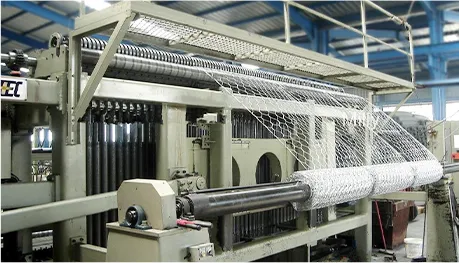-
 Phone:
Phone: -
 Email:
Email:

Hexagonal Wire Mesh - Versatile and Durable Solutions for Industrial and Architectural Applications
The Versatility of Hexagonal Wire Mesh
Hexagonal wire mesh, also known as chicken wire or hex mesh, is a widely used material in various applications due to its unique design and functional properties. Made from thin strands of wire woven together to form hexagonal openings, this mesh is not only lightweight but also incredibly strong, making it a popular choice in numerous industries.
One of the primary uses of hexagonal wire mesh is in agriculture. It serves as an effective fencing solution for poultry farms, garden enclosures, and livestock containment. The hexagonal design allows for adequate ventilation while preventing smaller animals from escaping or entering enclosed areas. Farmers appreciate its durability and ease of installation, as it can be adapted to various shapes and sizes, fitting into different terrains seamlessly.
In construction and landscaping, hexagonal wire mesh is frequently used as well. It acts as a reinforcement material in concrete structures, helping to maintain stability and strength. Additionally, landscapers utilize it for erosion control by securing soil and preventing runoff in sloped areas. The mesh can be filled with stones or soil, creating a natural barrier that blends beautifully with the environment while providing functional support.
hexagonal wire mesh

Another notable application of hexagonal wire mesh is in DIY projects and crafts
. Its flexibility and aesthetics make it a favorite among hobbyists and artisans. They use it to create unique decorations, birdcages, and even jewelry. The mesh can be easily manipulated with simple tools, allowing for a wide range of creative expressions.Furthermore, hexagonal wire mesh is instrumental in the field of safety and security. It is often used for protective barriers and custom fencing solutions in commercial and residential settings. The robust structure provides a deterrent against intruders while maintaining visibility, which is crucial for surveillance.
Importantly, hexagonal wire mesh is also valued for its sustainability. Many manufacturers produce it using recycled materials, contributing to eco-friendly practices in construction and agriculture. This approach not only reduces waste but also lowers the carbon footprint associated with producing new raw materials.
In conclusion, hexagonal wire mesh proves to be a resourceful and multifaceted material, finding applications across agricultural, construction, artistic, and security sectors. Its unique properties and versatility position it as an invaluable asset for various projects and needs. As industries continue to evolve, the demand for such innovative materials will likely increase, reinforcing the significance of hexagonal wire mesh in our daily lives.
-
Wire Mesh for Every Need: A Practical SolutionNewsJul.25,2025
-
Steel Fences: Durable, Secure, and Stylish OptionsNewsJul.25,2025
-
Roll Top Fencing: A Smart Solution for Safety and SecurityNewsJul.25,2025
-
Cattle Farm Fencing Solutions for Maximum SecurityNewsJul.25,2025
-
Affordable Iron Binding Wire SolutionsNewsJul.25,2025
-
Affordable Galvanized Wire SolutionsNewsJul.25,2025
-
Wire Hanger Recycling IdeasNewsJul.25,2025








